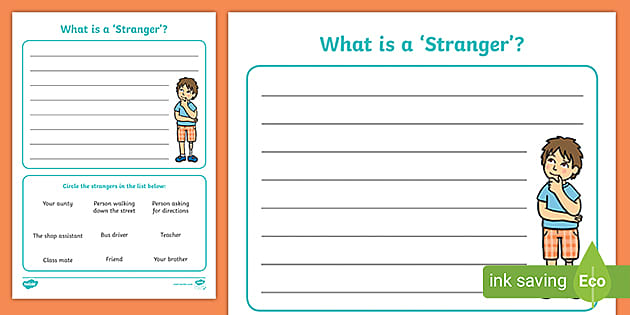Engaging Stranger Danger Activities for Kids: A Parent’s Guide to Safety
Every parent’s top priority is ensuring their child’s safety. With our engaging stranger danger activities, you can teach your kids vital safety skills in a fun and memorable way!
Understanding the Concept of Stranger Danger
Welcome, concerned parents! It can often be a little daunting to tackle the topic of stranger danger with your children, but fear not! The key is to inform and empower them without instilling unnecessary fear. We’re here to walk you through several activities that are not only educational but also enjoyable for your kids.
Strangers come in all shapes and sizes and while it’s important for children to be cautious, we also want them to understand that not all strangers are bad. The aim of these activities is to teach kids how to recognize potentially dangerous situations and react appropriately.
Role-Playing Scenarios
One of the most effective ways to teach your child about stranger danger is through role-playing. It provides a safe environment for your child to practice their reactions to various scenarios. Have your child practice saying “No, thank you” and “I need to find my parent,” and discuss different strategies they can use when approached by a stranger asking for help or offering gifts.
Here are a few ideas for role-playing scenarios:
- A stranger asks for help finding their lost dog.
- Someone they don’t know offers a ride home from school.
- A friendly person tries to give them candy or a toy.
Interactive Games
Games can be an excellent vehicle for teaching while keeping the mood light and enjoyable. Create a quiz with different stranger danger scenarios and ask your child the best way to handle each situation. Games like “Red Light, Green Light” can be adapted to teach children when to stop and think about safety (red light) and when it’s okay to proceed (green light).
Another interactive game is “The Trusty Game,” where you ask your child to point out trusted adults in different public places like a park or a mall. This helps them understand who they can turn to if they ever feel scared or lost.
Safe Stranger Versus Unsafe Stranger
It’s essential to distinguish between safe and unsafe strangers. Teach your child that police officers, firefighters, and teachers are examples of safe strangers. Explain that if they’re in trouble, looking for someone in uniform or a mother with children might be a good option for finding help.
A practical activity is to show them photos of people in different uniforms, and discuss what each person does and why they are considered safe. Using storybooks with characters in certain roles can also aid this learning process.
Education Through Technology
In the digital age, there are numerous apps and online resources available to help teach kids about personal safety. Engaging apps with interactive stories and scenarios can reinforce the concepts of stranger danger in a medium that is both accessible and entertaining for kids.
Some parent-friendly resources include smartphone applications such as Safety for Kids and online platforms like Kids Health, which offer a range of educational tools, games, and videos on the topic of stranger safety.
Stay tuned for our next section, where we delve deeper into the world of stranger safety, providing you with more creative strategies and tools to keep your kids informed and protected.

5 Essential Tips for Parents Preparing for Stranger Danger Activities
As you gear up for these important lessons with your little ones, here are five things to keep in mind when teaching stranger danger:
1. Start the Conversation Early
The concept of stranger danger should be introduced to your child at an early age. It’s important to have ongoing discussions that are age-appropriate and evolve as your child grows. This equips them with the knowledge and skills they need over time.
2. Focus on Behaviors, Not Appearances
It’s crucial to teach children to be wary of certain behaviors rather than the way people look. Emphasizing that anyone who tries to invade their personal space or asks them to go somewhere without parental permission is exhibiting warning signs.
3. Utilize the Buddy System
Explain to your children the importance of the buddy system and why they should always stick with a friend or a group. This reduces their chances of being approached by a stranger when they are alone. Practice this system during outings, emphasizing the importance of staying together.
4. Create a Code Word System
Developing a family code word can be a lifesaver. Teach your children that they should never leave with anyone who does not know this code word, even if the person claims that you have sent them.
5. Encourage Confidence and Assertiveness
Children who are timid may unfortunately be targeted by strangers. Encourage your child to be confident and assertive. Teach them how to firmly say “no” and to be loud in seeking help. Role-playing can be very helpful in building this confidence.
See more great Things to Do with Kids in New Zealand here. For more information see here
Disclaimer
The articles available via our website provide general information only and we strongly urge readers to exercise caution and conduct their own thorough research and fact-checking. The information presented should not be taken as absolute truth, and, to the maximum extent permitted by law, we will not be held liable for any inaccuracies or errors in the content. It is essential for individuals to independently verify and validate the information before making any decisions or taking any actions based on the articles.




